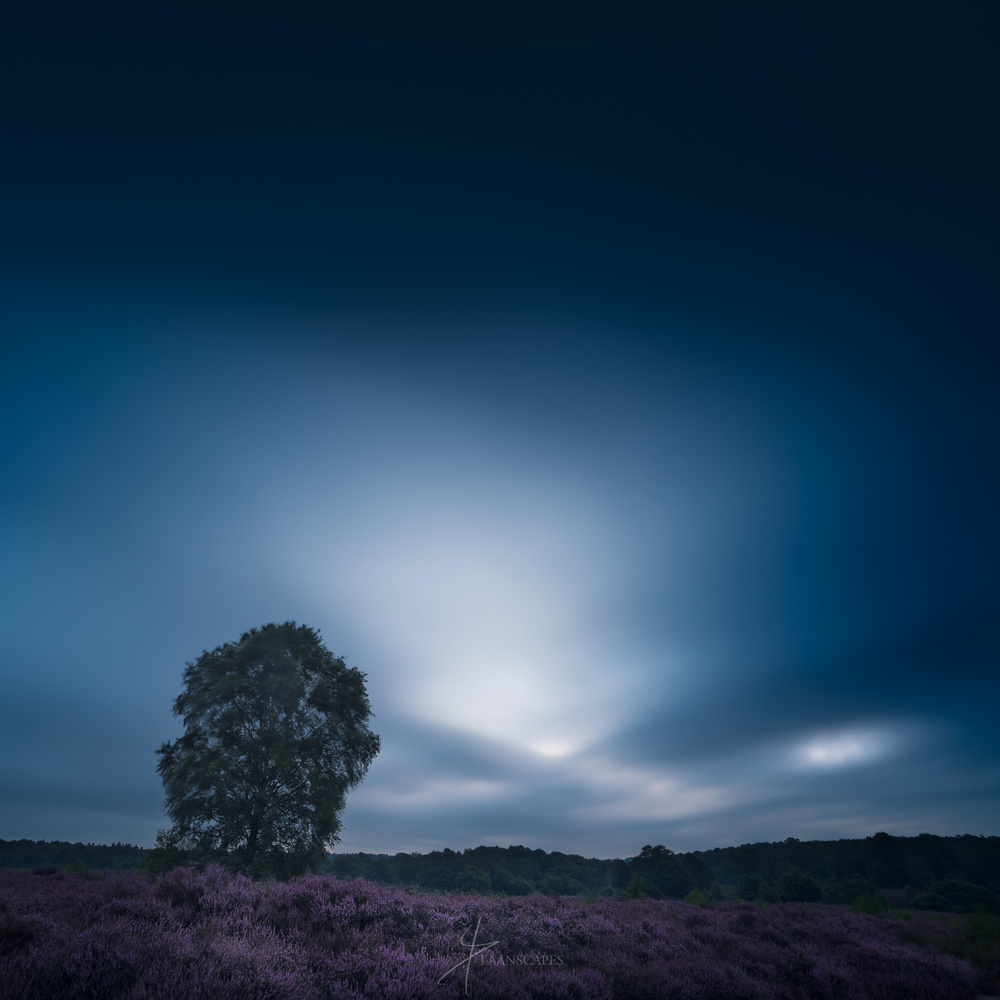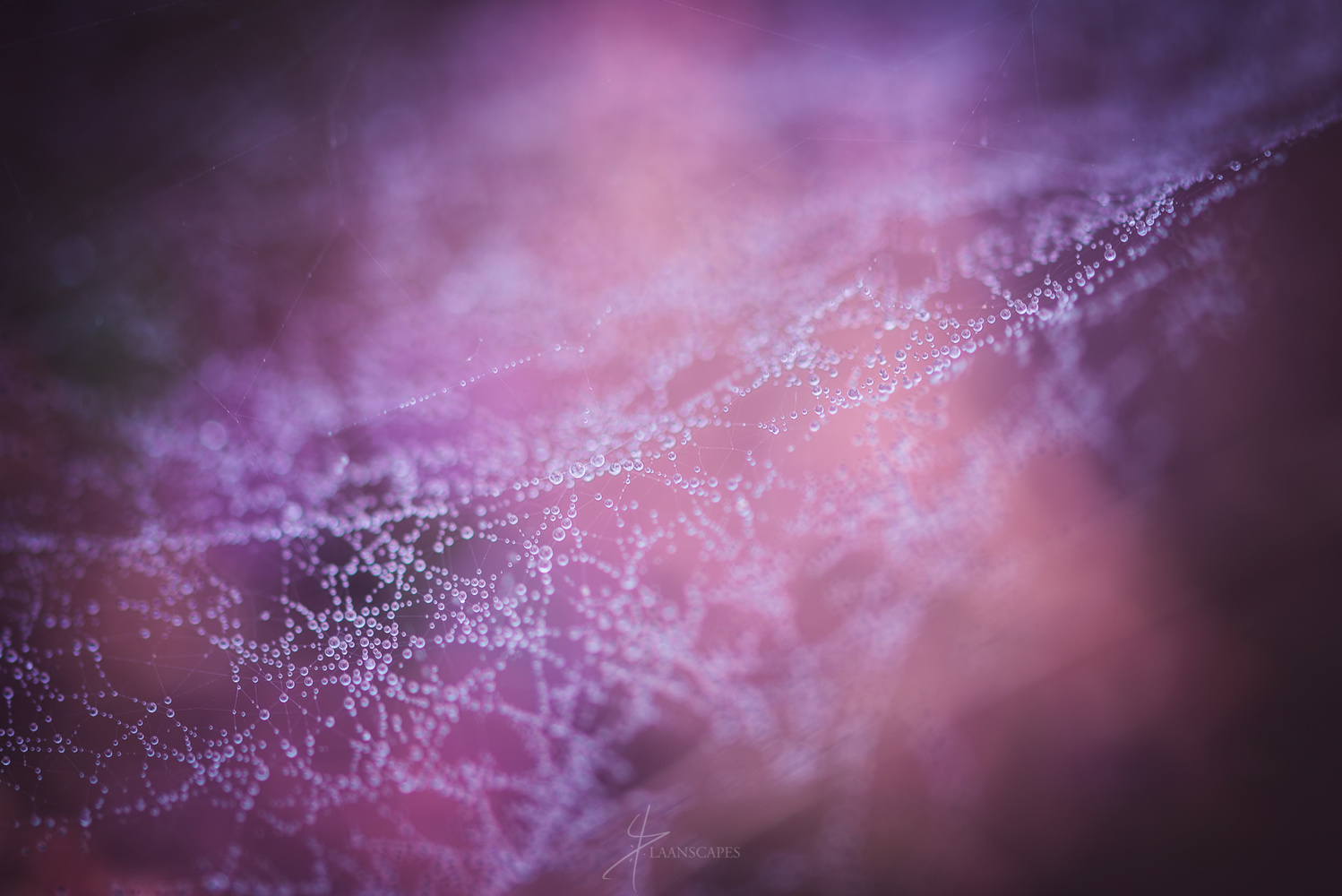Everywhere in Europe, heathers are looking positively vibrant. I trust that it's a worldwide phenomenon along the northern hemisphere. They’re also blooming three weeks sooner than past years; a result of an early Indian summer, due to the changing climate. Ostensibly, purple heather is a magnificent subject in landscape photography, but there are many more things you can capture in what is arguably the best season for photography. So let’s get you ready to capture this herald of autumn.
Landscape
1. The grand landscape looks its best when the foreground resonates the sky. Set your alarms this weekend and try to arrive on location well before sunrise. The best time to capture heather in all its splendor is during the golden hour, when clouds drift in and add interest in otherwise bland skies. With temperature inversions and low dew points, mist is prone to make that foreground that much more interesting as well, so watch the weather forecast closely in your anticipation of the weekend’s shoot. The dew left in the landscape as the mists give way to a beautiful warm day add extra contrast and therefore, saturation to your purple fields. The oblique angle, orange tints, and low intensity of the sunrise also create tons of impact when you do arrive early.

"A Perfect Lament" So the weather doesn't cooperate? The blue hour can be quite rewarding as well.
2. Go and look for lines in the landscape. They can be obvious like footpaths or meandering streams. Or suggestive like the curvature of the heather itself. Try to guide the viewer by providing that s-curve from fore- to background. Remember that curves slow the viewer down.
3. A landscape that reminds us of the African savannah is a good way to create this evolutionary echo. Look for lonely trees and hints of water, dotted throughout the violet fields.

"Sway" Out of Africa and into the Dutch countryside.
4. Be aware of hidden wildlife though. There’s this small anecdote I love to tell. It’s late September in 2013 and I’m hiking with my good friend in a Dutch National Park called “De Hoge Veluwe.” I’m not asking you to remember how to pronounce it, but if you’re from these parts, you’ll know that the Dutch countryside doesn’t seem threatening at all. It’s a far cry from the savannah I told you about earlier. Anyway, as we’re treading along the sandy paths, I naturally get distracted by the potential of lone trees among magenta and purple flowers. Then I got punched by my friend in the shoulder. Well, he didn’t mean it to be a punch, but I’m glad he tried to forcibly push me out of the way. As I looked down, there was this large female viper on which I would have surely stepped if it wasn’t for my friend to have spotted it. They aren’t aggressive at all, but an untreated bite can eventually leave you questioning your mortality… Vipers like to charge their temperature in the sunlight before hunting, so be sure to avoid semi-secluded patches of heather while looking for that potential masterpiece.
5. Of course those sweeping vistas are an obvious choice. But with a normal lens, a whole new world of intimate landscape photography opens up. I love abstract images and am a supporter of the fine-art genre. By taking a good look at yourself and asking what the landscape does to you as a person, you tap into the creative part of the brain. To me, there was heather as far as the eye could see, and I loved to portray a feeling of being lost both emotionally and physically through the use of intentional camera movement.

"Violet Heathers" The abstract of nature becomes more apparent through the use of intentional camera movement (ICM).
You can do this yourself by dialing in a tight aperture of about f/18 or f/22. It’s fair to state that sharpness doesn’t really matter in this technique. The long exposure works wonders when you slowly and steadily move the camera while the exposure lasts. Try to move it along one axis, to create a subtly dynamic image. If you find that the shutter speed isn’t slow enough, you can lower the ISO on some cameras to below spec. Look to your manual if you don’t know how to do this.
Macro
6. We’ve talked about this earlier. Those dewdrops in the blooming heather are great for all sorts of photography, but once the best moment for landscape photography passes, it gives way to the golden hour for macro imagery. In the late morning there’s a lot more ambient light available that helps to shorten those shutter speeds. That’s great when you’re working with longer lenses, as this could help to reduce motion blur.

"Dreamcatcher" Like miniature pearl necklaces, a spider's web is at it's most beautiful at dawn.
7. Heather has an unmistakable attraction to all sorts of insects. And with background colors that span the wheel from magenta to indigo, you’ll surely find yourself shooting magical pictures. Watch that background closely. Saturated colors in the surroundings of your insects can distract from your subject.
8. Did you miss the alarm and the dewdrops? Not to worry. There’s a trick in macro photography. Bring your own! A spray of fine water droplets will work wonders in that background by giving you gorgeous bokeh. Be sure to point your camera towards the light source for stunning backlit scenery in which that bokeh truly shines.
Wildlife
9. Well, I’ve mentioned vipers, but there are more (less venomous) species to encounter in and around fields of heather. Whip out your longer lenses. Fawns are seen everywhere where there’s heather, but late August is also the time of the year when fallow deer wear their crowns: Their antlers are here for the annual rut. Come October, the larger red deer take center stage. To witness their battle for reproduction, is a majestic sight. Red deer can be seen and heard the most at dusk.

"Monet's Red Deer" A female red deer turns to see what the photographer is doing while basking in the evening light. The females are much more docile than the males, especially in autumn.
Be aware that, even though they are herbivores, red deer can behave unpredictably and will defend their territory when they feel threatened. They might have grown accustomed to seeing humans, but during the rut, they can react extra instinctively and hot-headed. Your presence alone can influence their behavior, so it’s a good idea to leave them undisturbed in their habitat. It’s much better and safer for both of you to observe them from a distance. Finally a reason to splash out on that 600mm.






